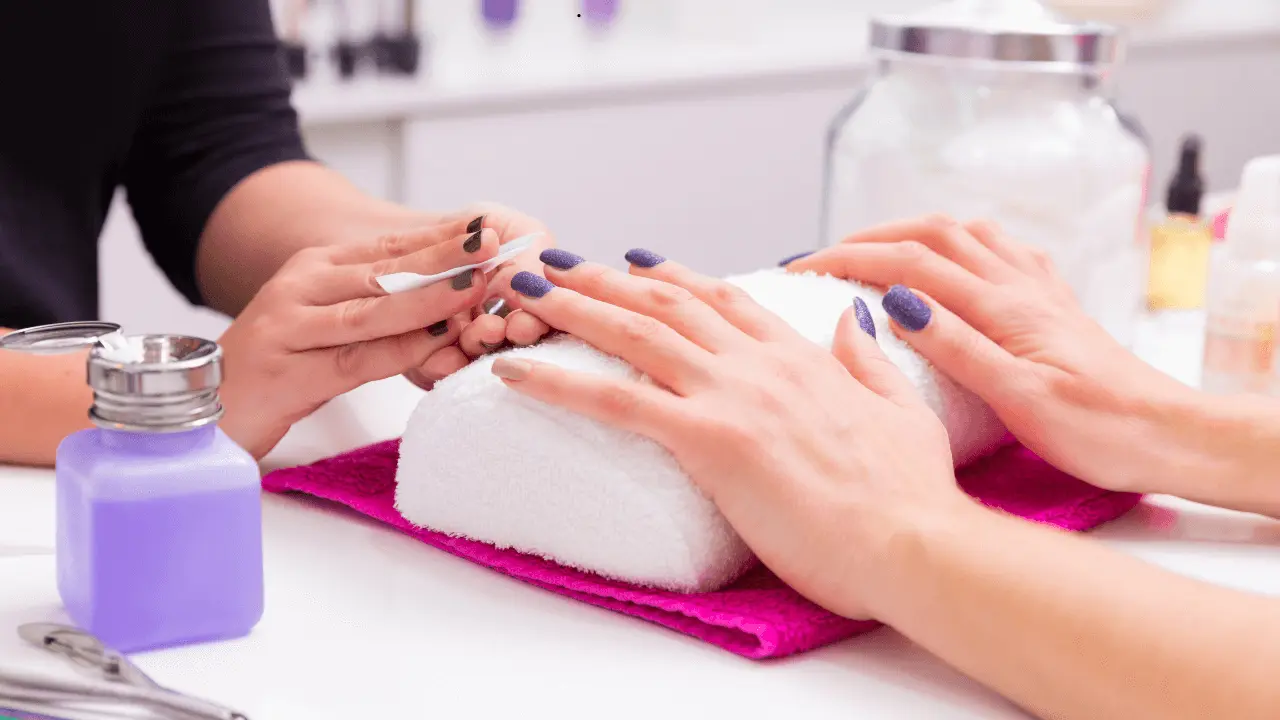How Often Should You Change Your Nail Polish to Avoid Damage?

For Distributors & Wholesalers
We welcome partnerships with distributors and wholesalers who wish to expand their business with a trusted and growing cosmetic brand.
Why Partner with Avlon International?
- Wide range of cosmetics: Nail polish, mascara, kajal, eyeliner, liquid lipstick, lipstick & more.
- Premium quality with competitive wholesale pricing.
- Attractive margins and fast-moving products.
- Assured support with marketing materials & promotional offers.
- PAN India shipping with secure packaging.
📦 Minimum Order Quantity (MOQ): 1 master carton (72 trays)
💰 Special Discounts: Available for bulk & long-term partners.
🚚 Dispatch & Delivery: PAN India in around 10-15 days.
📞 Contact Us:
Phone / WhatsApp: +91 88105 67775
Email: contactus@avloninternational.com
Website: www.avloninternational.com
Change Your Nail Polish to Avoid Damage
Nail polish is one of the simplest ways to express your personal style, whether it’s a bold color for a night out or a subtle shade for the office. However, frequent application, removal, and reapplication of nail polish can take a toll on your nails. If you want to maintain healthy, strong nails while still enjoying your favorite nail colors, knowing how often to change your nail polish is key.
In this blog post, we’ll explore the effects of changing nail polish too frequently, how to avoid damage, and tips for keeping your nails in top condition.
The Impact of Nail Polish on Your Nails
Nail polish, while safe for occasional use, can affect your nail health if applied and removed too often. Many polishes contain chemicals that can cause your nails to dry out, become brittle, or peel over time. Moreover, repeated use of nail polish removers, particularly acetone-based ones, can weaken the nail’s structure, making them more susceptible to damage.
But this doesn’t mean you have to avoid wearing nail polish altogether. It’s all about balance and knowing how often you can change your polish without harming your nails.
How Often Should You Change Nail Polish?
The general recommendation is to change your nail polish every 7 to 10 days. This timeframe allows your nails to have a break from polish, giving them time to “breathe” and recover from any potential drying effects caused by polish or remover.
Here’s why this duration is ideal:
- Nail Recovery: After about a week, it’s time to remove the old polish to prevent any staining or weakening of the nail. Nails need a short recovery period to maintain their strength and flexibility.
- Avoiding Stains: Some polishes, especially darker colors, can stain your nails if left on too long. Changing your polish after 7 to 10 days helps prevent long-lasting discoloration.
- Maintaining Nail Health: Giving your nails a break from polish for a few days between applications is crucial to avoid damage. Over time, excessive polish use can cause dryness, peeling, and even fungal infections if the nails are not properly cared for.
Warning Signs That You’re Changing Nail Polish Too Often
If you’re unsure whether you’re changing your nail polish too frequently, here are a few warning signs to watch for:
- Brittle or Weak Nails: If your nails are consistently brittle or break easily, it may be due to excessive polish use or exposure to harsh chemicals in removers.
- Discolored Nails: Yellowing or discoloration of the nails can result from leaving polish on for too long or repeatedly using dark colors without giving your nails a break.
- Peeling or Flaking: If you notice your nails peeling or flaking, this is a clear sign that they need more time to recover between polish changes.
- Dry Cuticles: Your cuticles may dry out from frequent exposure to nail polish remover. Proper cuticle care is essential for nail health.
How to Safely Remove Nail Polish
Removing your nail polish properly is just as important as how often you change it. Using harsh, acetone-based removers too often can cause significant damage to your nails, leaving them dry and brittle.
Here are a few tips for safe nail polish removal:
- Opt for Non-Acetone Removers: Acetone is incredibly drying to the nails and cuticles, so using a non-acetone remover is a gentler option. While it may take a bit longer to remove your polish, it’s worth the extra time for healthier nails.
- Limit Remover Use: Try to avoid using nail polish remover more than once a week. If possible, give your nails a few days’ break without polish to allow them to recover fully.
- Moisturize After Removal: After removing your nail polish, apply a nourishing cuticle oil or hand cream to restore moisture and promote healthy nail growth.
Tips to Keep Your Nails Healthy Between Polish Changes
To maintain healthy nails while enjoying frequent polish changes, it’s essential to follow some basic nail care practices. Here are some tips to help you avoid damage:
- Hydrate Your Nails: Regularly moisturizing your nails and cuticles can prevent dryness and brittleness. Use a cuticle oil or a hydrating hand cream every day, especially after removing nail polish.
- File Gently: Always file your nails gently in one direction to avoid creating small cracks that could lead to breakage. Invest in a high-quality, gentle nail file to maintain a smooth nail edge.
- Take Polish Breaks: Even if you love having perfectly painted nails, it’s important to give them a break every now and then. Consider going polish-free for a few days between manicures to allow your nails to “breathe” and recover.
- Use a Base Coat: A base coat acts as a protective barrier between your nail and the polish. It helps to prevent staining and can strengthen your nails by adding an extra layer of protection.
- Choose Non-Toxic Nail Polishes: Opt for “5-free” or “10-free” nail polishes that are free of harmful chemicals such as formaldehyde, toluene, and DBP. These formulas are gentler on your nails and reduce the risk of damage.
- Avoid Peeling Off Polish: It can be tempting to peel off old nail polish, but doing so can strip away the top layer of your nail, leaving it weak and vulnerable to damage.
Should You Go Polish-Free?
While it’s fun to experiment with different nail colors and designs, going polish-free for a few days or weeks can greatly benefit the overall health of your nails. By reducing the frequency of polish applications, you give your nails time to recover from the drying effects of both the polish and the remover.
Going polish-free can also help you detect any underlying nail issues, such as fungal infections, discoloration, or abnormal growth, which may be hidden under layers of polish.
The Importance of Using Quality Products
Choosing high-quality nail polish and nail care products can significantly reduce the risk of nail damage. Cheap, low-quality polishes may contain harsh chemicals that are harmful to your nails in the long run. Investing in well-known, trusted brands that offer non-toxic, long-lasting formulas is a great way to protect your nails.
Additionally, always use a top coat to protect your polish and extend its wear time. This not only keeps your manicure looking fresh for longer but also minimizes the need to change your polish frequently.
Conclusion
Nail polish is a fun way to express yourself, but frequent changes can lead to damage if not done properly. To avoid damage, it’s best to change your nail polish every 7 to 10 days and give your nails time to breathe between applications. By following proper nail care routines, such as moisturizing, filing gently, and using non-toxic products, you can keep your nails healthy, strong, and beautiful between polish changes.
At Avlon International, we believe in promoting nail health through high-quality, non-toxic products. Explore our range of nail polishes, removers, and nail care items to ensure your nails stay in top condition, no matter how often you love to change your look!
📌 Disclaimer
The information provided in this blog is for general informational purposes only. While Avlon International makes every effort to ensure the accuracy and reliability of the information shared, we make no representations or warranties of any kind, express or implied, about the completeness, accuracy, reliability, suitability, or availability with respect to the content.
Any reliance you place on such information is therefore strictly at your own risk. Avlon International shall not be held liable for any loss, damage, or inconvenience arising in connection with the use of this blog or its content.
For official details regarding our products, distributor policies, or business partnerships, please contact us directly at WhatsApp +91 88105 67775.




